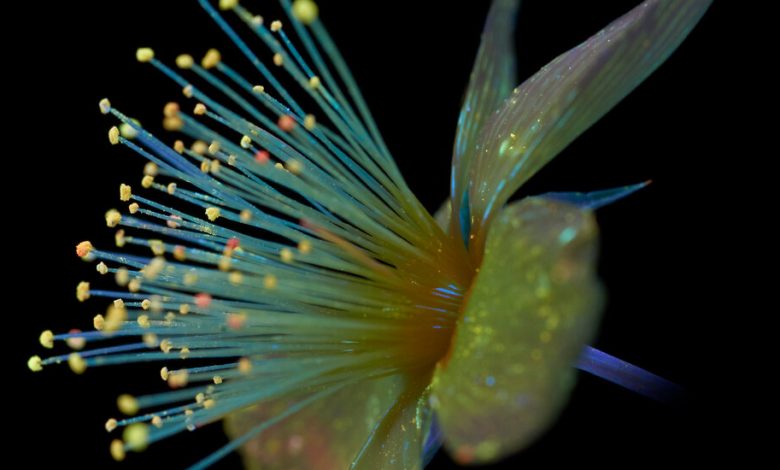A Bee’s-Eye View of the World

In WHAT THE BEES SEE: The Honeybee and Its Importance to You and Me (Chronicle, $40), Craig P. Burrows’s ultraviolet-lit photographs mimic the fluorescence his botanical subjects emit when exposed to sunlight, revealing colors and textures usually obscured by the dazzle of visible light. Because bees see in the ultraviolet spectrum, Burrows’s method can afford us a glimpse of the world as they perceive it: His portraits of plants are, in part, prompts for interspecies empathy at a time when bees are under attack on multiple fronts, from air pollution to pesticides.

Pollen clings to the face of a worker bee.Credit…Craig Burrows




Inthese exquisitely intimate close-ups — of French lavender, creeping fuchsia, cucumber flower and more — each specimen glimmers and throbs with otherworldly light against a backdrop as black as jeweler’s velvet.
Accompanying texts describe the bee and its pivotal place in global ecosystems (some 35 percent of food crops rely on insect pollinators), but the photographs themselves are, above all, a study of the plants on which bees feed.
Under Burrows’s ultraviolet lamps, pistil and stamen, stigma and anther glow with the colors of a distant planet or some bioluminescent creature of the deep seas, at once alien and familiar. These hallucinatory images don’t merely simulate a bee’s perspective, then, so much as help us to imagine an alternative reality: that of a creature whose fate is indivisibly bound up with our own.




